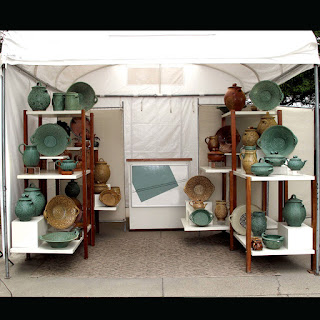I work almost daily with a very talented young sculptor from the Czech Republic.
His English is better than my Czech like, say, a bird is a better flier than a pig. But by the end of the day I end up speaking and thinking -- not Czech, but Czech-like.
Some of the quirky linguistic adaptations he makes as he translates his thoughts into my language roll 'round and 'round in my mind -- both the way they sound and often the significance of meaning intended and unintended.
For instance (and my favorite): "Dis moment"
When Misha (the young sculptor) and I are talking about a piece we're working on together, he will point at the curve of a pot's shoulder, or the turning of its foot and say, "Dis moment will make shadow below..." or "Dis moment here sit well, make stable base..."
I found myself wondering at the words he must be thinking about, and the hows and whys that led him to translate words that probably intend to mean "this passage" or "this part" or "this section".
I'm sure it was arrived at as a sort of parallel. A moment is a defined part of time just as the shoulder of the pot is a defined part of that whole. Just as the foot is a defined part of that whole.
I like it. My mind expands on it. I imagine the lovely thought that the moment in time that I conceived and made permanent the curve of a shoulder or the arc of a handle or the geometry of a trimmed foot...
...some future user of that pot will relive that moment in dawning realization. They'll "get" the inspiration I had for that shoulder. They'll understand the reasoning behind the foot. They'll feel the intent in the arc of that handle -- each of those moments relived and translated....
....from the intention of my mind, to the work of my hand, to the perception of the end user -- all in a shared moment.
A shared moment. Time and time and time again. For the life of the pot, from the life of the potter, to the life of the user.










